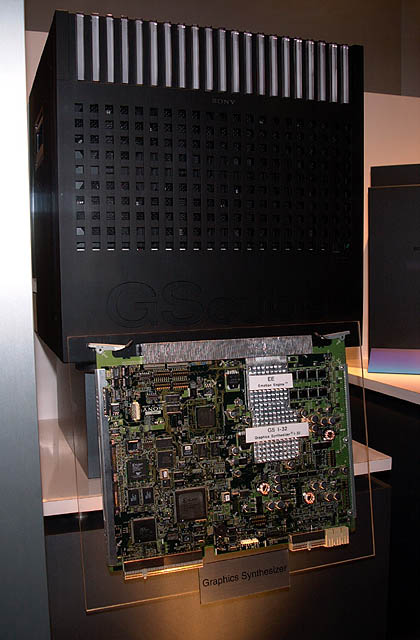Megadrive1988
Veteran
I was just wondering what could be acomplished on the Cell based workstations that are coming down the road.
we have info that already, as expected, the first prototype Cell based workstations are already out, pushing 2 TFLOPs. call it late 2004.
by late 2005 or early 2006, or at the latest, mid 2006, I'd expect the 16 TFLOPs Cell workstations to be out. just think what could be done on one of those, assuming it has the proportional graphics processing capabilities to back it up. I mean an equally large amount of graphics processing resources, more than PS3 will have.
we've seen a little bit of what the ~97 GFLOP GSCube could do:
*1.2 billion flat shaded polys/sec.
*many tens of millions of fully featured polys/sec
*maybe upto 300 million semi featured polys/sec
(from what i recall of the guys that did realtime Antz demo)
a 16 TFLOP workstation has ~167x more theoretical FP speed than GSCube and over 2500x more than PS2.
I don't want to hype Cell too much, but it would be / will be exciting to see what can be done on those forthcoming 16 TFLOPs workstations. it's much more believable than say, distributed computing for realtime rendering over the internet.
It would be so incredibly cool if you could group consumer PS3s together to get the same performance as those workstations. going by what was done with those 60 or 70 PS2s in Illinois at UIC, I don't think what I am thinking of is too far fetched.
sorry, excuse this poorly written mess of a post...just thinking of the possibilities

we have info that already, as expected, the first prototype Cell based workstations are already out, pushing 2 TFLOPs. call it late 2004.
by late 2005 or early 2006, or at the latest, mid 2006, I'd expect the 16 TFLOPs Cell workstations to be out. just think what could be done on one of those, assuming it has the proportional graphics processing capabilities to back it up. I mean an equally large amount of graphics processing resources, more than PS3 will have.
we've seen a little bit of what the ~97 GFLOP GSCube could do:
*1.2 billion flat shaded polys/sec.
*many tens of millions of fully featured polys/sec
*maybe upto 300 million semi featured polys/sec
(from what i recall of the guys that did realtime Antz demo)
a 16 TFLOP workstation has ~167x more theoretical FP speed than GSCube and over 2500x more than PS2.
I don't want to hype Cell too much, but it would be / will be exciting to see what can be done on those forthcoming 16 TFLOPs workstations. it's much more believable than say, distributed computing for realtime rendering over the internet.
It would be so incredibly cool if you could group consumer PS3s together to get the same performance as those workstations. going by what was done with those 60 or 70 PS2s in Illinois at UIC, I don't think what I am thinking of is too far fetched.
sorry, excuse this poorly written mess of a post...just thinking of the possibilities




